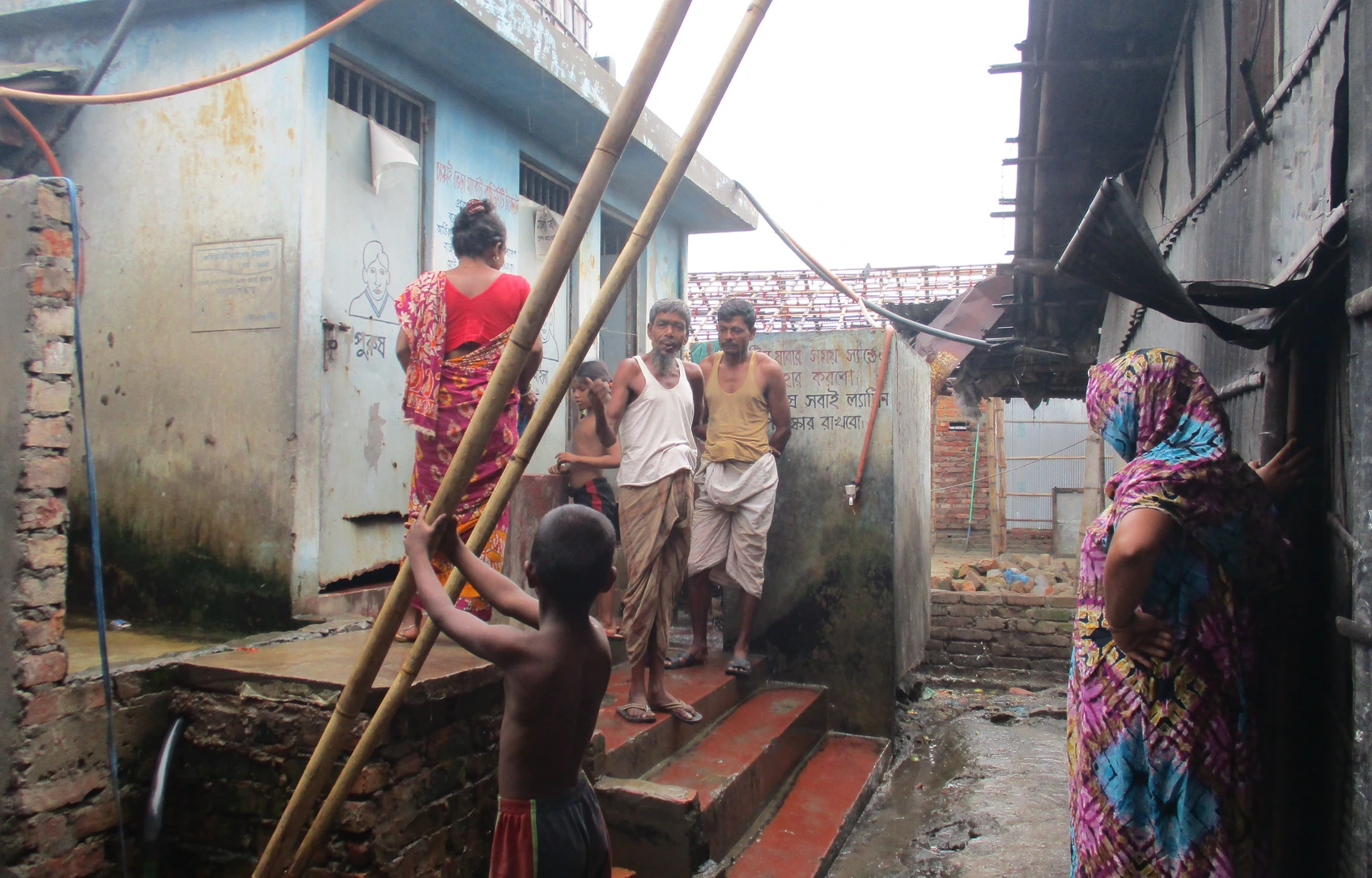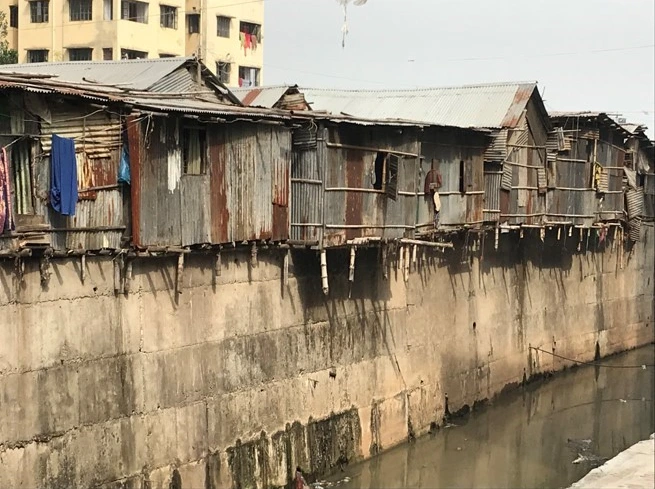
– The research produced an assessment of migration–sustainability linkages, which showed that while international migration flows tend to increase net environmental burdens, they can in certain circumstances speed up sustainability transitions.
– It produced in-depth insights into perceptions of migrant populations in a range of cities and continents, which showed that these migrants tend to emphasise community and social dimensions of sustainability as they seek to integrate into new places and cultural contexts.
– The work demonstrated the potential synergies for incorporation of the perspectives and positive outcomes of migration for sustainability and planning.
– These outcomes have been communicated widely through academic publications, interactions with UN processes such as the Global Compact on Migration and the Framework Convention on Climate Change, as well as with policy stakeholders in multiple countries.
– Partly as a result of MISTY’s work, in 2021 the Government of Bangladesh adopted a ground-breaking proactive and comprehensive displacement management strategy, that sets out a realistic rights-based framework for internally-displaced people.

Photo: Chattogram, Bangladesh (MISTY project)
What can a picture of people queuing for the toilet tell us about internal migration and sustainability?
Plenty, according to researchers in the Migration, Transformation, Sustainability (MISTY) project, which ran from 2019-2022, and was funded by the Transformation to Sustainability (T2S) programme of the Belmont Forum, the NORFACE network, and the International Science Council. The work sought to challenge the notion of migration as a threat or crisis, and explored the ways it interacts with sustainability concerns in destination cities – with an overarching aim to support the emergence of a more empathetic and evidence-based approach to migration management.
The ‘toilet queue’ image was taken by a Bengali migrant in the city of Chattogram – Bangladesh’s second largest, and a common destination for domestic migrants: largely due to internal migration, the city ballooned from 1.5 million people to 5.5 million people in just one generation. Many of these newer residents live in densely-occupied ‘colonies’, in areas that are prone to waterlogging and landslides in monsoon season, and are under-serviced or bereft of basic facilities such as sanitation, clean drinking water, and reliable supplies of gas and electricity.
“The colony I live in has 35 rooms but only two toilets,” reported the photographer, as part of a ‘photo voice’ participatory action research process, whereby participants were given cameras and asked to capture images depicting their lived realities as migrants in Chattogram. “All these people [in the photo I took] are standing in a queue to use the toilets in the morning.”
Precarious and dangerous working conditions add to these migrants’ daily stressors, the research found. Another Bengali migrant, who worked in the garment scrap industry, said that “in my workplace there is too much warm[th] and dust. People get sick from it. They get mainly fever and cold[s]… There are no fans where we work; dust is everywhere.”

Photo: Bola, Dhaka, Bangladesh (MISTY project)
Migration is set to be an increasingly salient feature of our world, as natural hazards increase in frequency and intensity as a result of climate change. By 2050, it is estimated that one in every 45 people will be displaced; for low-lying, densely-populated Bangladesh, that ratio is ramped up to one in every seven people. As such, governments in destination cities need good plans to be able to adapt.
To that end, and partly as a result of MISTY’s work, in 2021 the Government of Bangladesh adopted the National Strategy on the Management of Disaster and Climate Induced Internal Displacement developed by MISTY researcher and Professor at the University of Dhaka, Tasneem Siddiqui, and her colleagues at the Dhaka-based Refugee and Migratory Movements Research Unit (RMMRU).
The strategy “marks a governmental shift from its traditional relief-oriented approach to the displacement issue, to a more proactive and comprehensive displacement management”, according to a press release from the MISTY project in April 2021. The strategy sets out “a comprehensive and realistic rights-based framework that respects, protects, and ensures the rights of disaster and climate-induced internally displaced persons in different stages of displacement and during the search for durable solutions,” the release stated.
Chattogram was just one of six cities investigated in depth in the MISTY project, which also studied the situations of domestic migrants in Brussels (Belgium), Amsterdam (Netherlands), Worcester (USA), Maputo (Mozambique) and Accra (Ghana). “Usually, multi-country research is focused on the [Global] South,” said Siddiqui; “this is the first time that [a project like this] includes developed countries and reads both North and South as equal – and asks how both are impacted by internal migration.”
Neil Adger, a social scientist at the University of Exeter and a lead researcher on the project, also emphasized the ground-breaking nature of the project. “This work is essentially written on a ‘blank canvas’, because this topic hasn’t been researched before,” he said. While there’s a reasonable amount of research on people as “victims of environmental change” (such as climate refugees), and on the global movement of labour, “that’s not telling us anything really about the fundamental relationship between migration and sustainability,” he said.

Photo: Survey work in Accra, Ghana (MISTY project)
As such, one strand of the project looked at global patterns of the movement of people – both internally and across borders – over the last half-century, and explored whether or not this has any association with movements towards or away from sustainability. Using economic modelling and looking at outcomes for individuals, the researchers found that “the movement of people does create an environmental burden,” said Adger, “but paradoxically, for individuals – on average – it tends to be successful [in terms of meeting their aspirations].”
However, he said, it is important to look beyond simple population-level environmental indicators and also consider “what are the opportunities for people, whenever they do move, to actually be part of transformations to sustainability?” In response to this second line of inquiry, the team found generally that when people are attached to – and secure in – a new place, they are more likely to invest in its sustainability. This highlights the wider importance of helping migrants to settle in well. “If you’ve just moved somewhere, and you think you’re going to move somewhere else, then you’re unlikely to invest heavily in your social networks, your community, or the environment around you,” said Adger.
The researchers also used policy analysis to explore perceptions and potential governance interventions towards sustainable migration, to help integrate the reality of migration into sustainable transition strategies. In Bangladesh, for instance, during a workshop on ‘Safe and Sustainable Cities’, MISTY researchers presented narratives and photographs from Chattogram migrants to stimulate reflections from policy stakeholders. In response, the Minister for Planning shared his ambitions for sustainable transformation, and said the Bangladesh government welcomes policy-level contributions from international collaborations, with the ultimate goal of improving sustainability and urban governance. “We would like to coordinate, and change things so that at the end of the day, city dwellers, new migrants, [and] old migrants… can live in peace,” he said.
Overall, the project was “adventurous and challenging”, said Siddiqui – particularly given the onset of the COVID-19 pandemic. However, this ‘curve ball’ also threw up unexpected opportunities – including the chance to produce a detailed analysis of the impact of COVID on migrant experiences. “We went into the COVID study thinking we would find high levels of social stigma,” said Adger, “but we didn’t find that at all; rather, we found that it’s extremely disruptive of migrant aspirations – whether they plan to stay, or to return to where they came from later in life.” In these ways, the MISTY research has sought to shine a light on the real and experienced interactions between migration and sustainability.